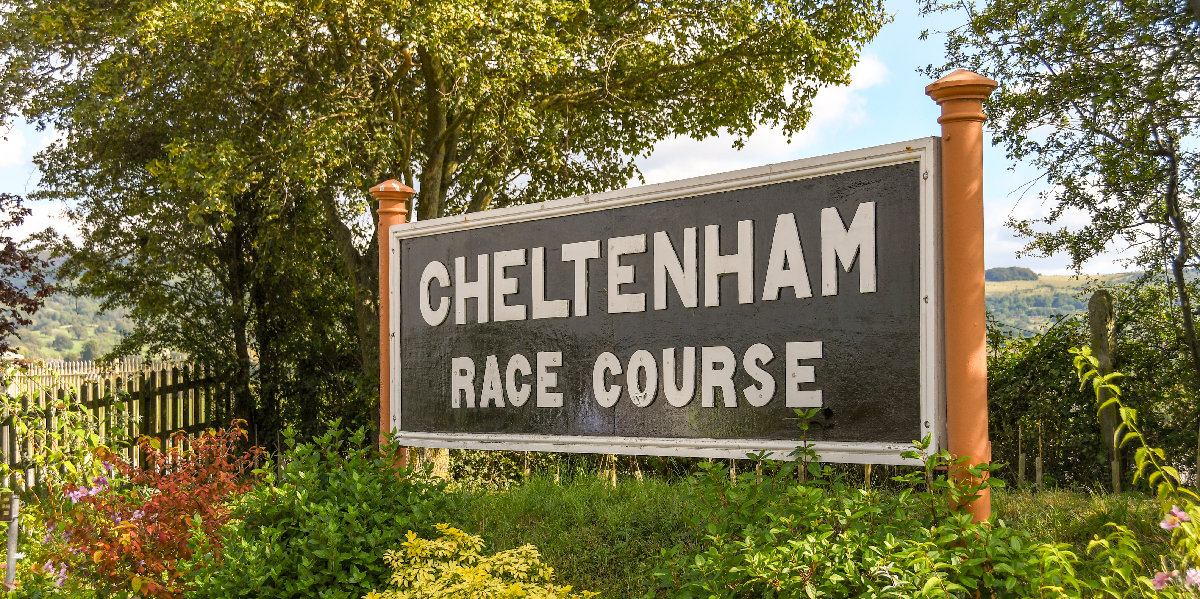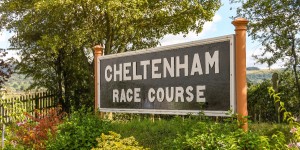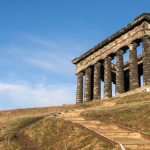
The Five Minutes Spare tour of Cheltenham
Could Cheltenham be your favourite English city? It’s about a whole lot more than just horse racing…
Cheltenham might be famous throughout the UK as a horse racing venue, but that doesn’t mean it doesn’t have a wealth of history behind it, to back all that swagger up. Cheltenham is sometimes known as Cheltenham Spa, and that’s all to do with a little spring that sprung south of town.
Let’s find out more about the spring – and any other interesting nuggets of Cheltenham history – in our five-minute guide to the town.
The Early Days of Cheltenham
Cheltenham goes all the way back to Saxon times, when it is said to have been a small village. Nobody is really sure where the name comes from except that it is ancient. It is deduced from linguistics that the name might mean ‘steep hill’, ‘Watery meadow,’ or perhaps even just ‘settlement’.
Whatever it means, it was first noted in 803. Little knowledge remains of pre-spa-discovery Cheltenham since the mineral spring obscured all else. That being said, we can still find an entry in the Domesday Survey for them. The survey was conducted in 1086, twenty years after King William the Conqueror moved into England. He wanted to know what he had stolen and this was the best way to do it. It was also the first-ever full survey of its kind that was ever created in England.
In the Domesday Survey, Cheltenham was reported as being 46 households strong. While some people think that the town only grew as a result of the spa, it isn’t wholly true. Back then, 46 households meant that it was in the largest 20% of settlements.
Among the 46 households, there were 24 villagers, 12 smallholders, 2 priests, a single reeve, and 7 slaves. That’s right, we kept slaves back then. Something we should all remember given the BLM movement. The land included 3 ploughland with 21 teams to work those fields. There were five mills and 1 and a half church lands. In 1086, Cheltenham was a pretty powerful place.
All this culminated in them becoming a centre of trade throughout the centuries. Its pre-medieval history focuses much on the slow growth of a market town. People would come from all over to trade their wares and, in the 13th century, they were finally awarded a charter to hold an annual fair. This charter was awarded by King Henry III – but it stayed largely farmland based. It was church and farm-based, a small village where everyone knew each other… right up until the 17th century when the population would have been about 1,500.
Middle Age Cheltenham
Again much of this history is patchy. We know that the malting industry was large in Cheltenham, so malting and brewing were favoured. We also know that there was a grammar school that opened in 1578. This is a sure sign that there was plenty of progress in the area. There was a 15th-century manner house built to house the De La Bere family just outside of town, another indication of a thriving financial sector.
We managed to dig up an article on the black plague of 1348 in Gloucester. Travel from Bristol was banned and many people fled to the countryside to escape the potential death of the city. The death rate was at least 20% and as high as 60% in some places. It is said that the plague came in three waves… each wave leaving less alive than the last. In some parts of England, there weren’t enough people left alive to bury the dead.
Let’s take a moment out to talk about some of the most famous people to have emerged from this area of the country before we move on to the making of Cheltenham Spa.
Some Famous People from Cheltenham
There are a number of famous people to have emerged from this wonderful town. Although we don’t have either the time or the patience to list them all here, we will let you in on a few of the Five Minutes Spare favourites. Some of the best known famous people out of Cheltenham include:
- Geoff Dyer, the writer, is from Cheltenham
- Kate Thornton from the telly is a Cheltenham lass.
- The guitarist for Motorhead – Wurzel
- Brian Jones who founded the Rolling Stones was from here.
- Footballers Eric Dier, Martin DeVaney, Steve Cotterhill, Geoff Hurst, and Mike Summerbee.
- Cricketers Michael Bailey, Gilbert Jessop, and Claude Myburgh
We haven’t even scratched the surface if we are being honest. There are so many people to have emerged from Cheltenham that we really did lose count. Someone must have a full record, somewhere… You can view the list we used, here.
The Discovery of a Mineral Spring
Cheltenham Spa takes its name from the small mineral spring that can be found in the town. The spring was first discovered in 1716, but it took another few years before its owner seized it as a business opportunity. As of the beginning of the century, people were drinking from it for its believed healing powers. By 1738, the man who owned it (Henry Skillicorne) had dug the spring out and built a well around it. He went on to build a property around that well so that he could fully monetize the spa.
A book was written about the spa’s waters in 1740, which ultimately led to a royal visit in 1788 by King George III. The royal visit prompted a wave of new tourism to the area, which was backed up by the addition of the railway and the oncoming industrial era. Where other towns were booming from iron smelting, making hats, or dealing in lead, Cheltenham was famed as a holiday destination… even all the way back then.
There was such an influx of bustle to the town that a new spa was sought. After all, if this wonderful healing water was able to come up from the ground beneath them, then surely one man’s descendants shouldn’t have all the glory. In the early parts of the 19th century, several new spas were opened. Montpelier Spa is one example. It benefited from a lush garden set around the spring. Another was the Sherborne Spa, created later in 1818. The town grew to accommodate the new wealth.
In 1801 the recorded residents of Cheltenham numbered 3,000 people. By the 1850s this had swollen up to 35k. It was a market town with an annual fair, a railway and river to export with, and it’s own spa system. In 1830 the spa begot a piped water system so that it was pumped up from below ground and sampled by guests. The Pittville Pump Room was responsible for the tasting sessions among the aristocracy of the time.
Perhaps the greatest testament to the importance of the spa in Cheltenham, however, comes from the name. It is known as Cheltenham Spa even to this day. The railway station was named this, and the name stuck.
The Post-Industrial Era
The 19th century saw Cheltenham expand beyond the former boundaries. The introduction of the railway line meant that it was no longer only the rich that could afford to spend a day at the spa. Many of those middle-class workers who came here chose to stay, and so the town’s population grew again.
Some of the new buildings that arose from the Industrial Revolution include the Promenade, Royal Crescent, The Pittvile Pump Room that we mentioned earlier, a Ladies College and a College soon followed. In 1786 a town council of sorts was formed. Their duties included oversight of things like piping, lighting, and cleaning the streets. In 1824 the piped water supply was finalised and a sewerage firm was added ten years later. By 1895 the town had electricity, and a theatre was added in the same decade. Gardens arose, The spa had become less of a tourist attraction, and the town proper had taken hold.
By 1900 the population was about 50,000 people. The museum and an art gallery opened to accommodate the tourists, which did still drizzle in. In the 20s the council built housing estates to manage the overflow of families crammed into poor social situations at home. Further housing estates were added in 1945, 1974 and then again in the early nineties.
Bye Bye Tram
The last tram ran on the street in 1930, Sandford Park opened in 1927, and the people lived through two World Wars. In the first, dozens upon dozens of young men from the town went to their deaths at the hands of the Germans in the trenches. Back in those days, we formed buddy regiments. This encouraged young men to sign up along with all their friends. While it seemed like a good idea at the time, we quickly suffered for it. Whole towns of young men were wiped out together, never to make it home. This is the reason why nowadays, joining the army means leaving home.
WWI also saw the addition of the USA supply services set up operations in town, through distribution points at the racecourse. This turned into a massive depot for all things necessary for military life. Although most were shipped away for use during the D-Day operation, you might still find some interesting trinkets around the area if you can convince someone to let you in with a metal detector. If not? Just enjoy the show.
In the Second World War yet more young men left to defend the country. Bombers flew over the town intermittently, the worst raid killing 31 civilians. The BBC keep good records of eye witness accounts from WWII. We recommend heading there briefly to read through some accounts. Do hurry back though, we will be waiting for you.
As of 1815, horse racing was an established art form in town. Since then, it has grown to accommodate the famous Cheltenham racing events. The Festival first ran in 1902 and hasn’t missed a year (except during wartime and pandemic time) since.
Nowadays, Cheltenham is home to several shopping centres and a plethora of festivals. Be it music or flowers, books or animals, you will find a celebration for it in this happy town. We adore the fact that, although built around a small spring, this town has grown almost to the size of city status. We love to hear about small villages that grew up to be big cities, and Cheltenham wins first place of them all.
Fun Facts about Cheltenham
We wouldn’t be Five Minutes Spare if we weren’t going to shower you with useless trivia throughout this article. Here is everything you never wanted to know about Cheltenham, but that’s still fun to find out:
- Lewis Carroll used to come here as a young child. It is believed that ‘Through the Looking Glass’ was inspired by the scenery in and around Cheltenham. That’s an impressive claim to fame.
- Cheltenham has one of the biggest Croquet Clubs in existence and is actually home to the National Croquet Association. Where else would you put it?
- There’s only one golf course, a fact so remarkable for an English town that we had to mention it as trivia. You can get play a round at Liley Brook, in Charlton Kings, but that’s your lot.
- Cheltenham is sometimes called ‘the western gateway of the Cotswolds’, which has a nice poetic feel to it… rather like the city itself.
- The discovery of the spa is put down to pigeons, which are part of the town’s flag as a result. Why? The pigeons pecked at the soil around the spring, exposing the salt crystals. This meant two things: one, that the landowner eventually noticed and investigated, and two, that everyone who came to sample the water was just drinking saltwater… but the less said about that the better.
As you can see, Cheltenham is a thoroughly interesting place. It’s not just the history of it, either. The interest has everything to do with the multiple attractions in town. Could Cheltenham still be one of the best holiday destinations in the UK? We checked it out, just in case…
The best things to see and do in Cheltenham
Now that we know all about the history of this ancient spa village, let’s look at the best attractions in town.
Historic Sights and Landmarks
There is a steam-powered railway that runs from Gloucestershire to Warwickshire, and you can catch it at Cheltenham, where it passes the racecourse. This steam engine is one of the last of its kind in England. Train enthusiasts should check this particular attraction out before they cancel it for being environmentally challenging.
The Everyman Theatre is a bit of a local landmark and attraction. First opened more than a hundred years ago, the theatre aims at entertaining the people of the town with all the latest Broadway shows. It has a regular array of musicals and its own talent, too.
There is a nearby ruined Abbey that people like to spend the day sightseeing. Hailes Abbey has numerous historic monuments from the churches heyday, as well as having some gorgeous ancient ruins to explore. There is a gift shop and a cafe, too. It’s run by English Heritage so please donate if possible.
Galleries and Museums
It wouldn’t be a proper trip to Cheltenham if you didn’t check out the Wilson Art Gallery and Museum. They run regular exhibitions about local and fine artists. They also hold events for the younger generation of artist and offer school group tours. If you want to learn about the area, the museum has it all.
There is a strange museum in town, called the Holst Birthplace Museum, named for Gustav Holst – the man that fist spotted the Holst Comet. Although time has led us to only notice and remember this comet once in a revolution, you can still go to his birthplace and visit the house preserved in time.
Sports and Recreation
Recreation wise, there are plenty of long walks and gardens in Cheltenham… hence the flower show. The Imperial Gardens are absolutely stunning in high summer. You should look into the Lido as well since they have been providing spa pool water for centuries.
As we mentioned, they only have a single golf club – but there are other sports. Cheltenham Rugby Club, for example, gets a lot of hype. Their nickname is the Cheltenham Tigers and they are ferocious on the field. The local football team is Cheltenham Town FC and you can pay them a visit, watch a match, or even take a tour of their club.
Outdoor Attractions
Pittville Park sports some fascinating architecture alongside a fabulous lake with three swans in it, according to Navigator728950. There’s a boating pond, some moorhens and ducks, and a lovely bandstand/gazebo that you might be lucky enough to catch something on, or under.
If you are looking for something to do in Cheltenham that includes kids, then look no further than the Walks with Hawks centre. It introduces people to the world of birds of prey, which kids and adults alike find entertaining. They have flight showings once a day so be sure to time your journey so you can catch one… It’s worth it. Sometimes the birds fly so low you feel the breeze in your hair!

Image: Ceri Breeze/Shutterstock.com
Let’s not forget that Racecourse, either Go for a day at the races, attend an event or fundraiser, or take a steam train alongside it. There are a few days of the year that you should watch out for before you show up. Check out their schedule or book seats.
Shopping and Retail
As well as the usual options in malls and shopping centres, Cheltenham still has a bit of a reputation with brewing. You can take a tour of the Brennen and Brown Gin Distillery, which always results in an interesting day out. The Sibling Distillery offers a similar experience.
If regular shopping is what you are looking for, head to the Cheltenham Promenade for the more expensive stores. You can also check out the shops at the Regent Arcade in the town centre for more.
Other things to see and do in Cheltenham
Although we tried our best, we couldn’t possibly cover all of the sights and sounds of Cheltenham in a single article. As such, below are some of the attractions we had to leave out.
Some other notable attractions in Cheltenham include:
- The Montpelier District is like the town’s financial district. Here you will find elegance, architecture, and costly coffees. It’s worth a walk around on a sunny day. It also has gardens and the spa there.
- Colesbourne park as some beautiful wildlife and yet more sunbathing space.
- The Cotswolds Farm Park does the same thing that the bird centre does except with farm animals and less flying.
- The Honeybourne Line is a good walk and bicycle way through lovely forested areas.
As you can see, there is a lot more to Cheltenham than the flower festival and the racecourse! There’s something for everyone sheltered in this spa city.
How to Get to Cheltenham?
We have just about finished our five-minute tour of the lovely city of Cheltenham. Until next time, we leave you with these iffy-at-best directions on how to get there.
By Road
If you head north or south on the M5, you will eventually reach signs for Cheltenham.
By Rail
Cheltenham Spa Railway Station is the stop you are looking for.
By Air
Gloucestershire Airport is only 4 miles away but you have Bristol an hour away if you need it.
By Sea
Although there isn’t sea access, you are on the River Chelt. It’s a bit too small to sail up, but you could probably do it in a canoe.


